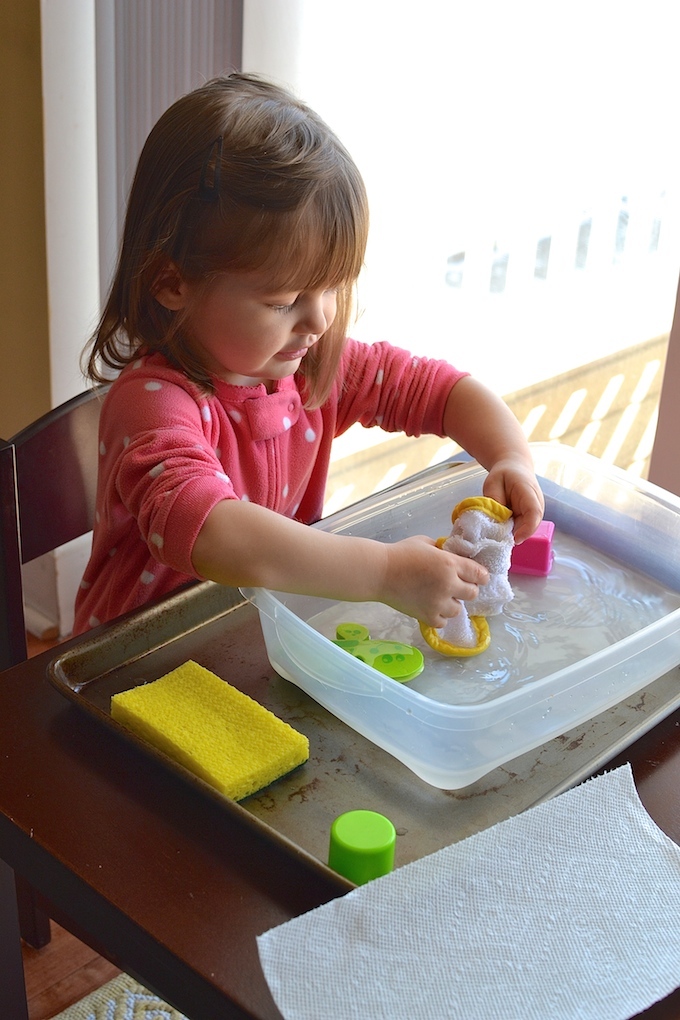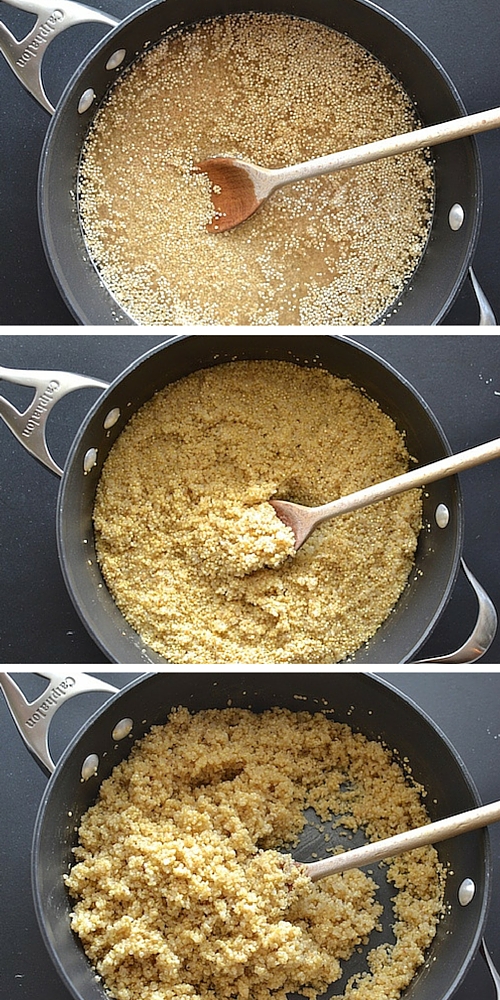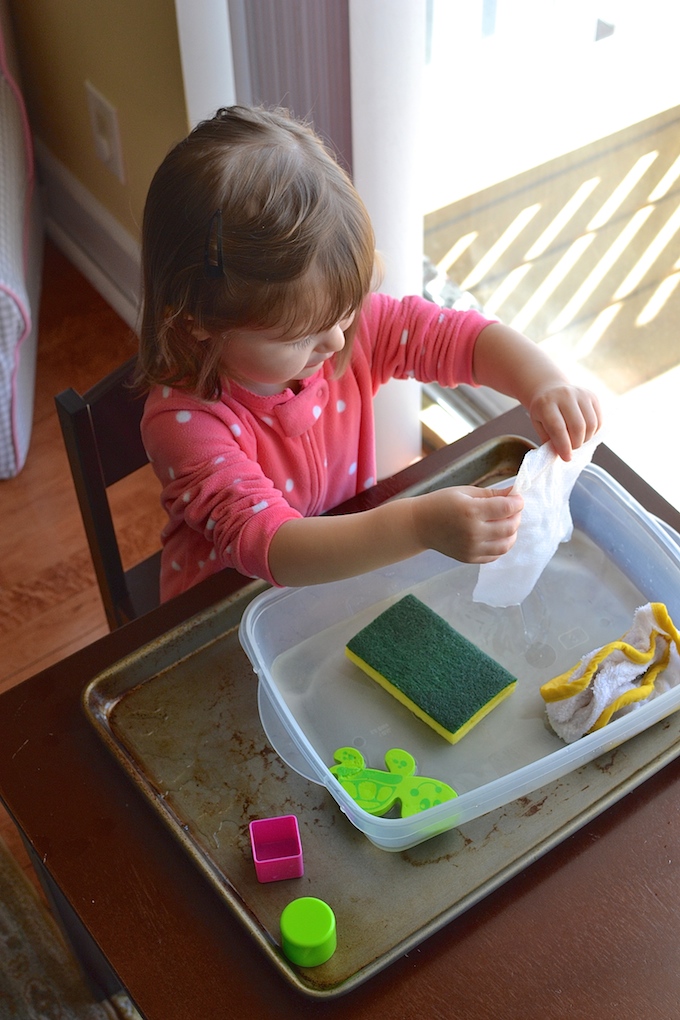Quinoa, like rice, absorbs the liquid it is cooked in to become soft and ready-to-eat. Absorb? What does that mean? With our Moroccan Spiced Quinoa Bowls recipe, we’re investigating and learning all about absorption!

Absorb means “to take in or soak up” (usually a liquid). When a material can soak in, take in, mop up, sop up, suck up, or draw in a liquid, we say that it is absorbent or it can absorb that liquid. The process of soaking in a liquid is called absorption. (Yes, you can introduce all of these vocabulary words!)
Take for example, the quinoa that we cooked up for our recipe. Ask your child to look carefully at the pot of water and quinoa BEFORE cooking, DURING cooking and AFTER cooking.
- What do you see? (Before: quinoa is floating in the water; During: there is less water; After: the quinoa has absorbed all of the water)
- What’s happening to the water?
- What’s happening to the quinoa?
- What is different from beginning to end?
- Where did the water go?

What else can absorb liquid? After your quinoa is done cooking, you can investigate absorption further with just a few simple items from around your house! You’ll need:
- A container of water (I used a large, wide storage container with a baking sheet underneath)
- Various items to test for absorption – we used a sponge, a washcloth, a foam bath toy, plastic blocks and a paper towel. You can test anything you’d like!

Em dipped each item in the water and then we squeezed it to see if the item had soaked up any water. We talked about whether each one was absorbing, or soaking up, the water. Even at a young age, she could tell me that the sponge, washcloth and paper towel were absorbent, and the bath toy and blocks were not.
There are a lot of other great examples of absorption experiments out there, but I particularly like the “Water Science Experiment” from Little Bins for Little Hands. Her son uses colored water (to see the absorption better…genius!) and tests all sorts of materials from cotton balls to aluminum foil. For another variation, KidsActivitiesBlog shares a water absorption experiment in which her son squeezes the absorbed water into small cups to measure which materials are the MOST absorbent and why…a great extension activity for older kids.
Kids, especially of toddler/preschool age, are like little sponges (pun intended!) for new information, so don’t be afraid to try these science experiments with even the youngest kids in your house. And with these hands-on experiences, they’re more likely to remember the intended lesson. Plus, it’s just fun to play with water!
Disclaimer: As with all of our recipes and activities, my suggestions for how kids can help with a particular recipe are based on what has worked in our kitchen. Your child may be able to help more or less based on their age and/or ability. As always, make sure you are properly supervising kids in the kitchen.
 Carol says
Carol says
March 5, 2016 at 8:37 AMLove it! It is so important to instill a spirit of inquiry at a young age!
 Sally says
Sally says
March 10, 2016 at 2:21 PMAgreed! Thanks, Carol.
 Linda toonen says
Linda toonen says
March 5, 2016 at 5:37 PMTotally awesome!!! And,who can resist the cute experimenter?
Linda
 Sally says
Sally says
March 10, 2016 at 2:16 PMThanks! I think she’s pretty cute 🙂
 Mary says
Mary says
March 7, 2016 at 11:30 AMSuch great ideas Sally! Emme is so lucky to have you as her mom. 🙂 I made your slow-cooker applesauce this weekend. I shared it with Nathan and Graham. It was a hit, thanks.
 Sally says
Sally says
March 10, 2016 at 2:18 PMAww, that’s so sweet, thank you! I’m glad you guys enjoyed the applesauce…that reminds me I need to make a new batch for the freezer!